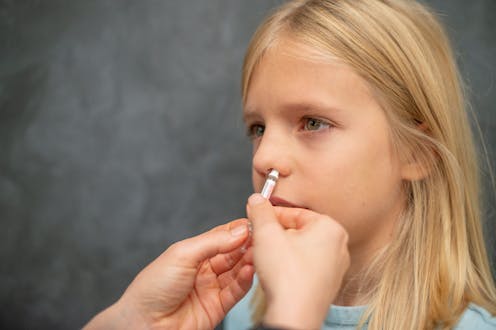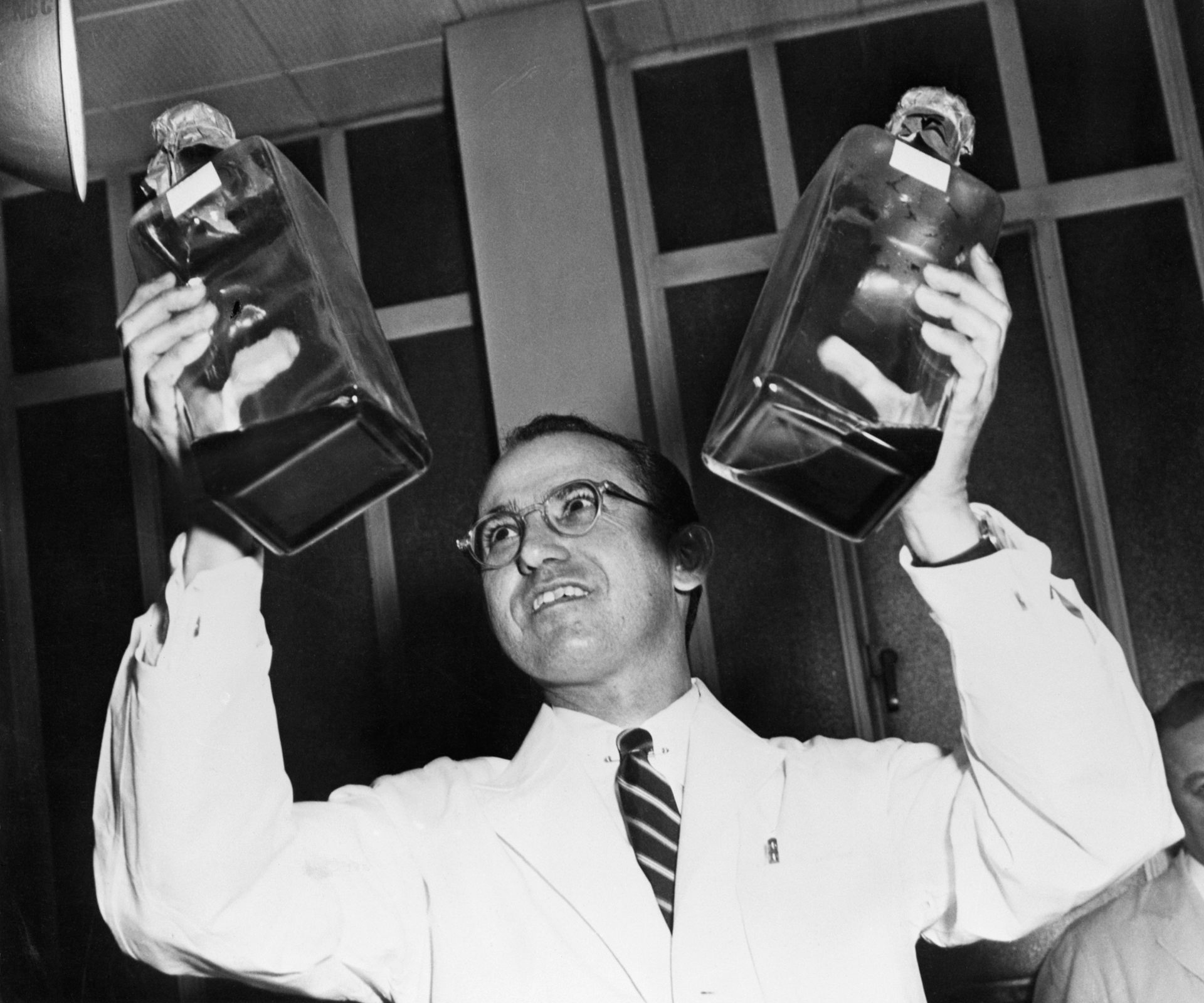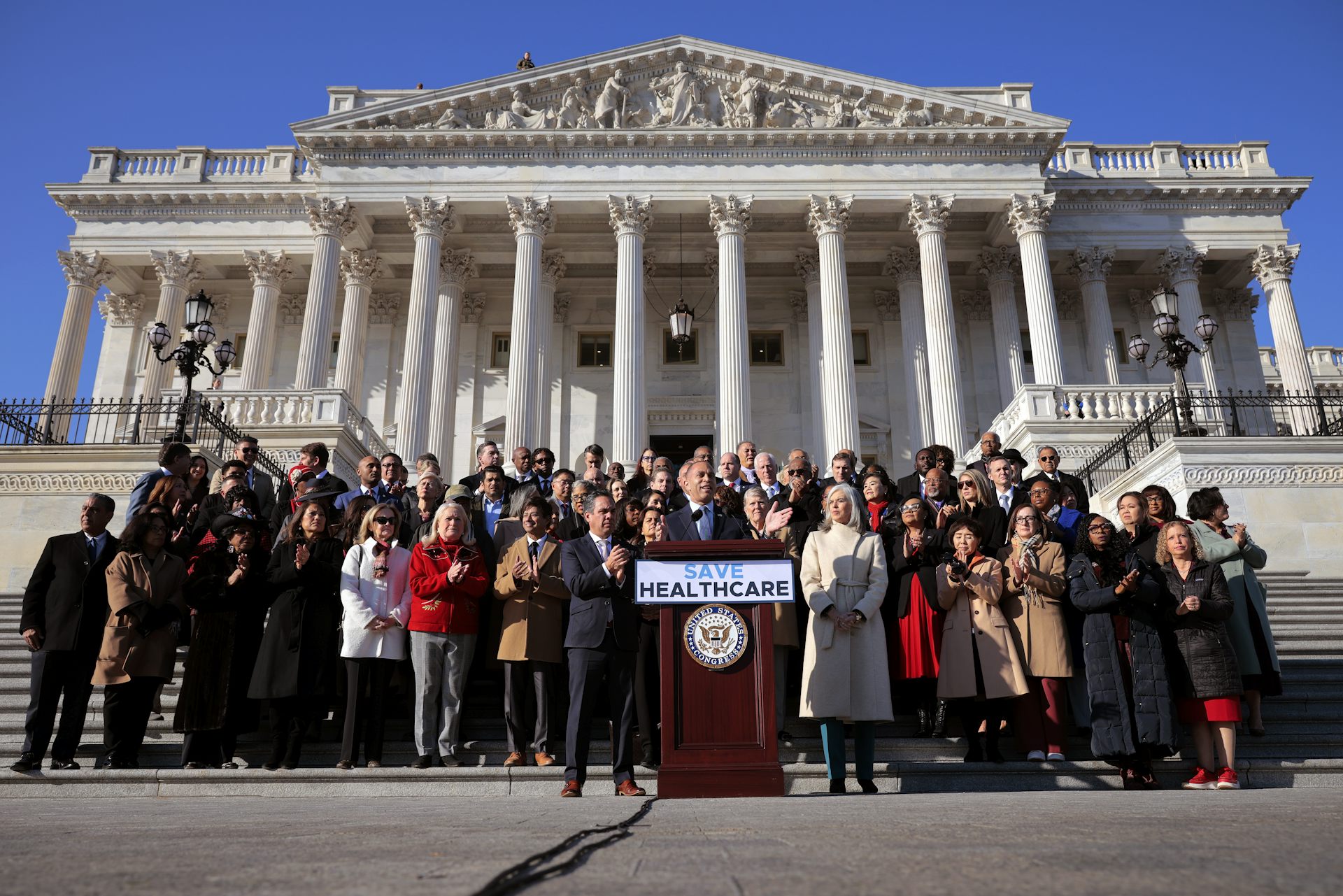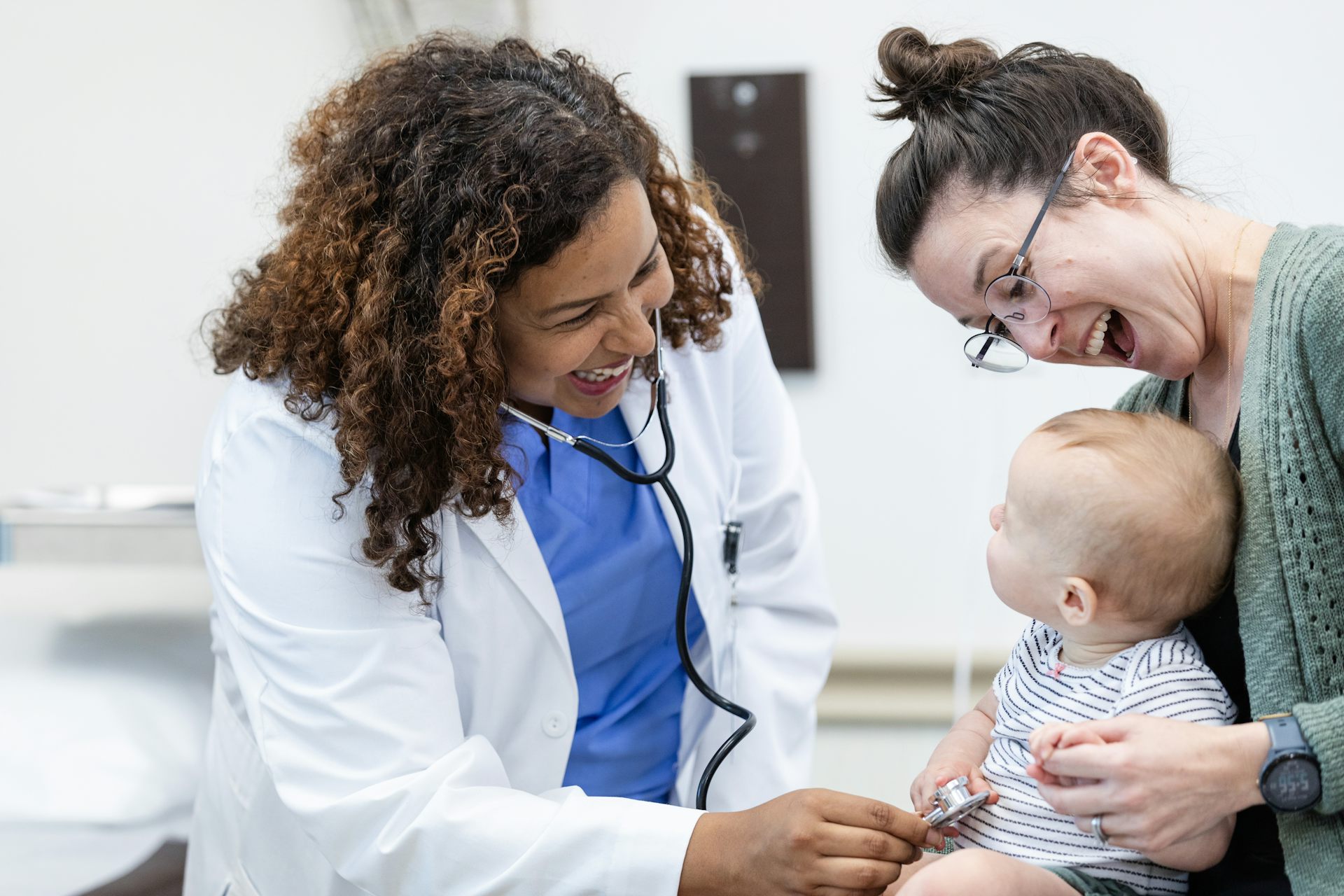Nasal vaccines promise to stop the COVID-19 virus before it gets to the lungs – an immunologist expl
An effective nasal vaccine could stop the virus that causes COVID-19 right at its point of entry. But devising one that works has been a challenge for researchers.

The Pfizer-BioNTech and Moderna mRNA vaccines have played a large role in preventing deaths and severe infections from COVID-19. But researchers are still in the process of developing alternative approaches to vaccines to improve their effectiveness, including how they’re administered. Immunologist and microbiologist Michael W. Russell of the University at Buffalo explains how nasal vaccines work, and where they are in the development pipeline.
How does the immune system fight pathogens?
The immune system has two distinct components: mucosal and circulatory.
The mucosal immune system provides protection at the mucosal surfaces of the body. These include the mouth, eyes, middle ear, the mammary and other glands, and the gastrointestinal, respiratory and urogenital tracts. Antibodies and a variety of other anti-microbial proteins in the sticky secretions that cover these surfaces, as well as immune cells located in the lining of these surfaces, directly attack invading pathogens.
The circulatory part of the immune system generates antibodies and immune cells that are delivered through the bloodstream to the internal tissues and organs. These circulating antibodies do not usually reach the mucosal surfaces in large enough amounts to be effective. Thus mucosal and circulatory compartments of the immune system are largely separate and independent.
What are the key players in mucosal immunity?
The immune components people may be most familiar with are proteins known as antibodies, or immunoglobulins. The immune system generates antibodies in response to invading agents that the body identifies as “non-self,” such as viruses and bacteria.
Antibodies bind to specific antigens: the part or product of a pathogen that induces an immune response. Binding to antigens allows antibodies to either inactivate them, as they do with toxins and viruses, or kill bacteria with the help of additional immune proteins or cells.
The mucosal immune system generates a specialized form of antibody called secretory IgA, or SIgA. Because SIgA is located in mucosal secretions, such as saliva, tears, nasal and intestinal secretions, and breast milk, it is resistant to digestive enzymes that readily destroy other forms of antibodies. It is also superior to most other immunoglobulins at neutralizing viruses and toxins, and at preventing bacteria from attaching to and invading the cells lining the surfaces of organs.
There are also many other key players in the mucosal immune system, including different types of anti-microbial proteins that kill pathogens, as well as immune cells that generate antibody responses.
How does the COVID-19 virus enter the body?
Almost all infectious diseases in people and other animals are acquired through mucosal surfaces, such as by eating or drinking, breathing or sexual contact. Major exceptions include infections from wounds, or pathogens delivered by insect or tick bites.
The virus that causes COVID-19, SARS-CoV-2, enters the body via droplets or aerosols that get into your nose, mouth or eyes. It can cause severe disease if it descends deep into the lungs and causes an overactive, inflammatory immune response.
This means that the virus’s first contact with the immune system is probably through the surfaces of the nose, mouth and throat. This is supported by the presence of SIgA antibodies against SARS-CoV-2 in the secretions of infected people, including their saliva, nasal fluid and tears. These locations, especially the tonsils, have specialized areas that specifically trigger mucosal immune responses.
Some research suggests that if these SIgA antibody responses form as a result of vaccination or prior infection, or occur quickly enough in response to a new infection, they could prevent serious disease by confining the virus to the upper respiratory tract until it is eliminated.
How do nasal vaccines work?
Vaccines can be given through mucosal routes via the mouth or nose. This induces an immune response through areas that stimulate the mucosal immune system, leading mucosal secretions to produce SIgA antibodies.
There are several existing mucosal vaccines, most of them taken by mouth. Currently only one, the flu vaccine, is delivered nasally.
In the case of nasal vaccines, the viral antigens intended to stimulate the immune system would be taken up by immune cells within the lining of the nose or tonsils. While the exact mechanisms by which nasal vaccines work in people have not been thoroughly studied, researchers believe they work analogously to oral mucosal vaccines. Antigens in the vaccine induce B cells in mucosal sites to mature into plasma cells that secrete a form of IgA. That IgA is then transported into mucosal secretions throughout the body, where it becomes SIgA.
If the SIgA antibodies in the nose, mouth or throat target SARS-CoV-2, they could neutralize the virus before it can drop down into the lungs and establish an infection.
What advantage do mucosal vaccines have against COVID-19?
I believe that arguably the best way to protect an individual against COVID-19 is to block the virus at its point of entry, or at least to confine it to the upper respiratory tract, where it might inflict relatively little damage.
Breaking chains of viral transmission is crucial to controlling epidemics. Researchers know that COVID-19 spreads during normal breathing and speech, and is exacerbated by sneezing, coughing, shouting, singing and other forms of exertion. Because these emissions mostly originate from saliva and nasal secretions, where the predominant form of antibody present is SIgA, it stands to reason that secretions with a sufficiently high level of SIgA antibodies against the virus could neutralize and thereby diminish its transmissibility.
Existing vaccines, however, do not induce SIgA antibody responses. Injected vaccines primarily induce circulating IgG antibodies, which are effective in preventing serious disease in the lungs. Nasal vaccines specifically induce SIgA antibodies in nasal and salivary secretions, where the virus is initially acquired, and can more effectively prevent transmission.
Nasal vaccines may be a useful supplement to injected vaccines in hot spots of infection. Since they don’t require needles, they might also help overcome vaccine hesitancy due to fear of injections.
How close are researchers to creating a nasal COVID-19 vaccine?
There have been over 100 oral or nasal COVID-19 vaccines in development around the world.
Most of these have been or are currently being tested in animal models. Many have reported successfully inducing protective antibodies in the blood and secretions, and have prevented infection in these animals. However, few have been successfully tested in people. Many have been abandoned without fully reporting study details.
According to the World Health Organization, 14 nasal COVID-19 vaccines are in clinical trials as of late 2022. Reports from China and India indicate that nasal or inhaled vaccines have been approved in these countries. But little information is publicly available about the results of the studies supporting approval of these vaccines.
Michael W. Russell receives consultation fees from Therapyx, Inc., and has received previous research grants (now inactive) from the National Institutes of Health; he is also named on current grants to Therapyx, Inc. Therapyx has no interests in products for COVID-19.
Read These Next
How to reduce gift-giving stress with your kids – a child psychologist’s tips for making magic and a
Depending on family circumstances and a child’s personality type, gift giving runs the gamut of fun…
The world risks forgetting one of humanity’s greatest triumphs as polio nears global eradication − 7
Polio may finally be defeated in the next 5 years. Will the world recognize what an extraordinary achievement…
As millions of Americans face a steep rise in health insurance costs, lawmakers continue a century-l
US health care policy will remain fractured until lawmakers address the core question of who is responsible…






